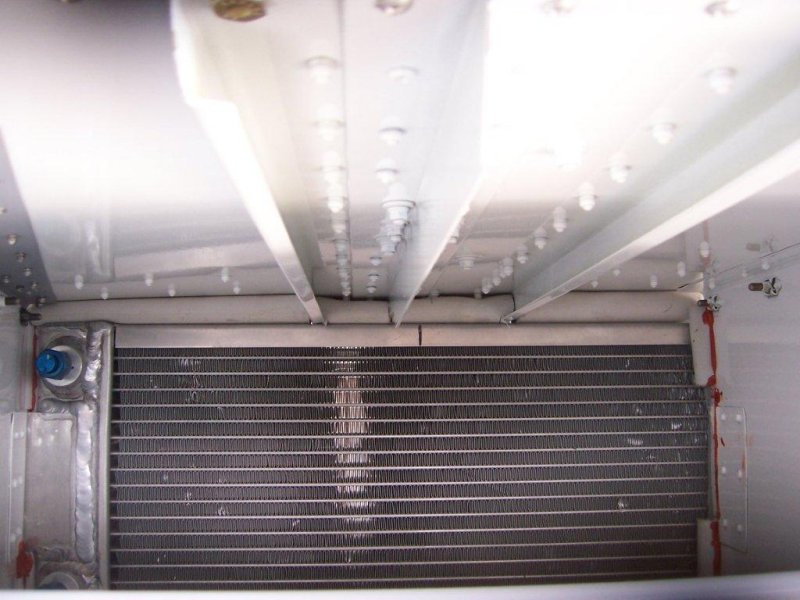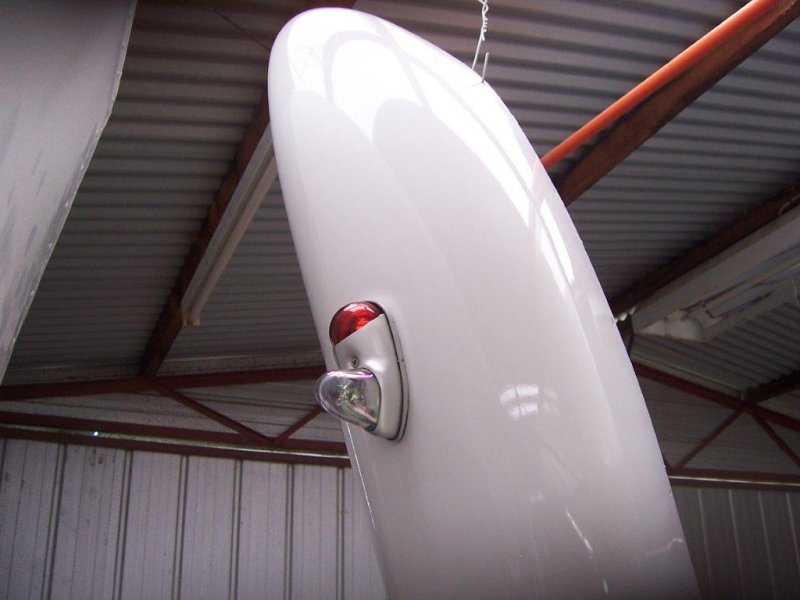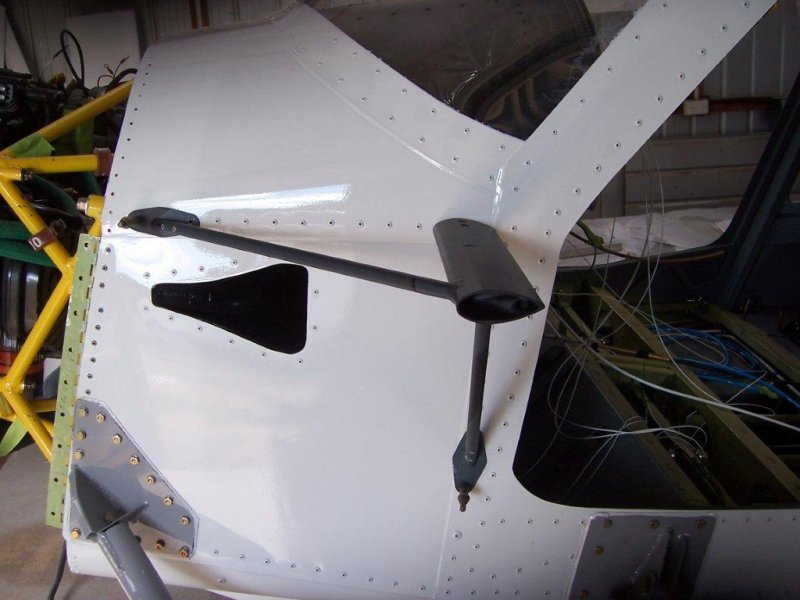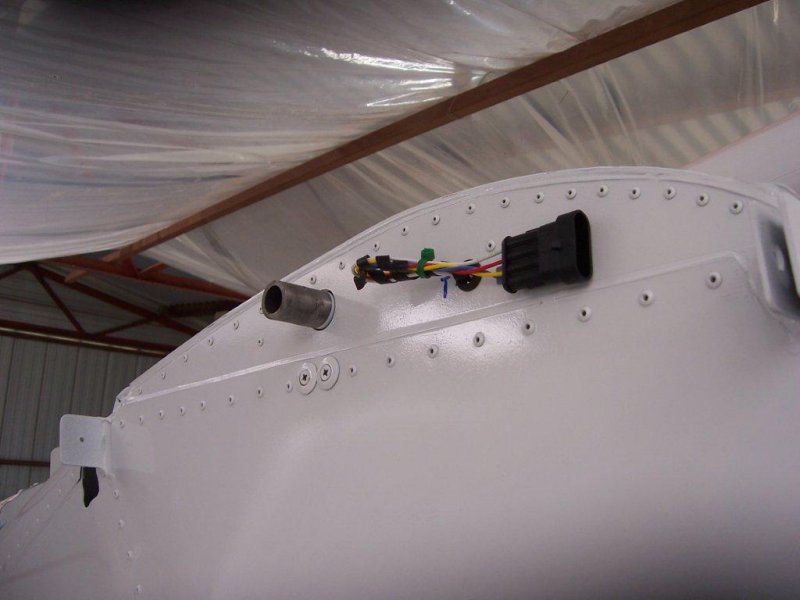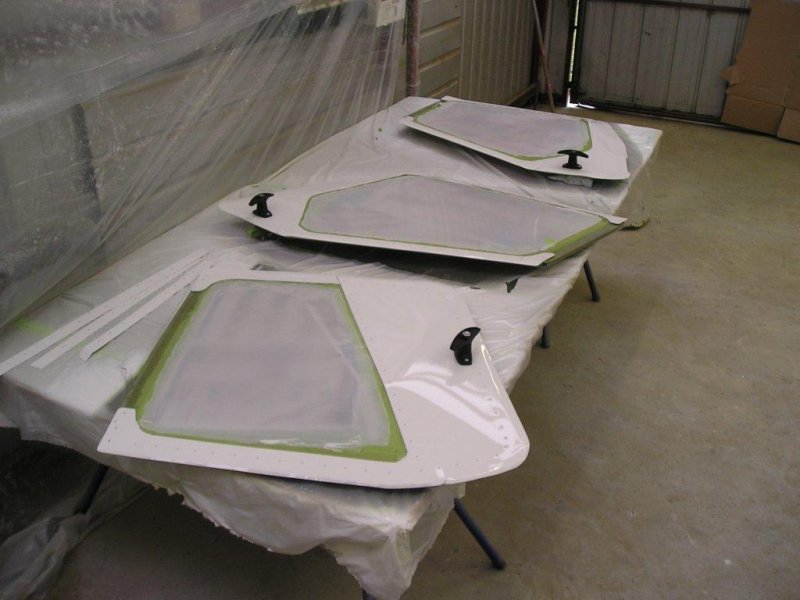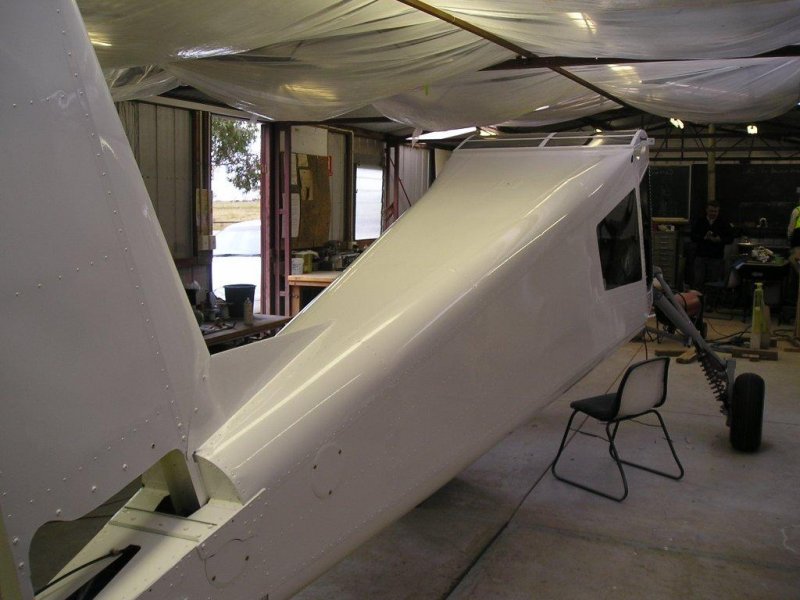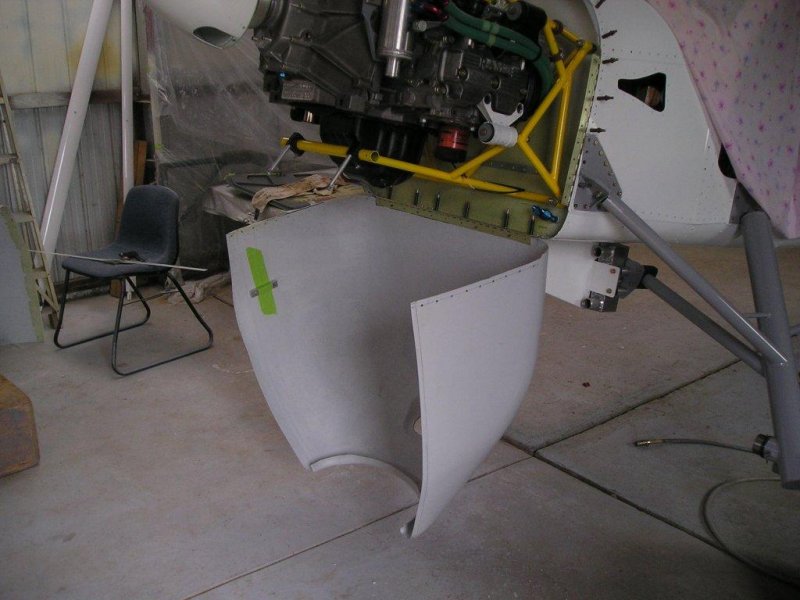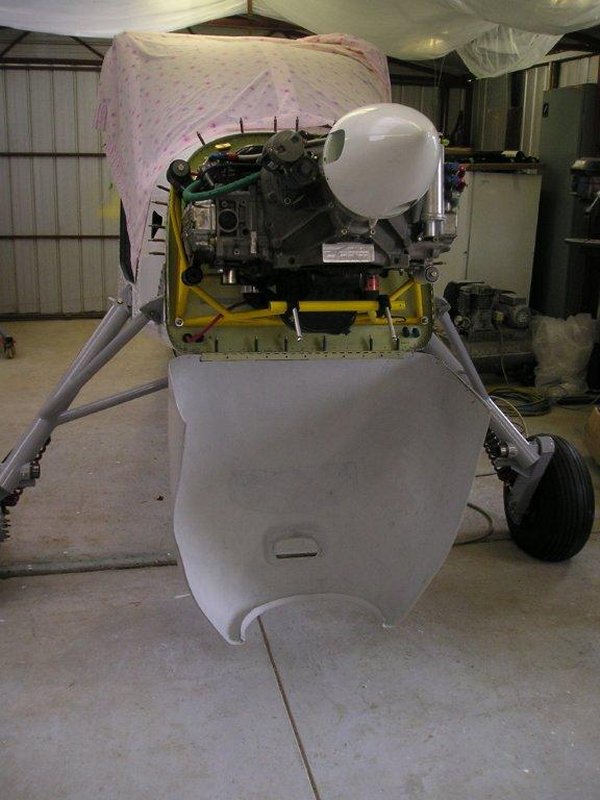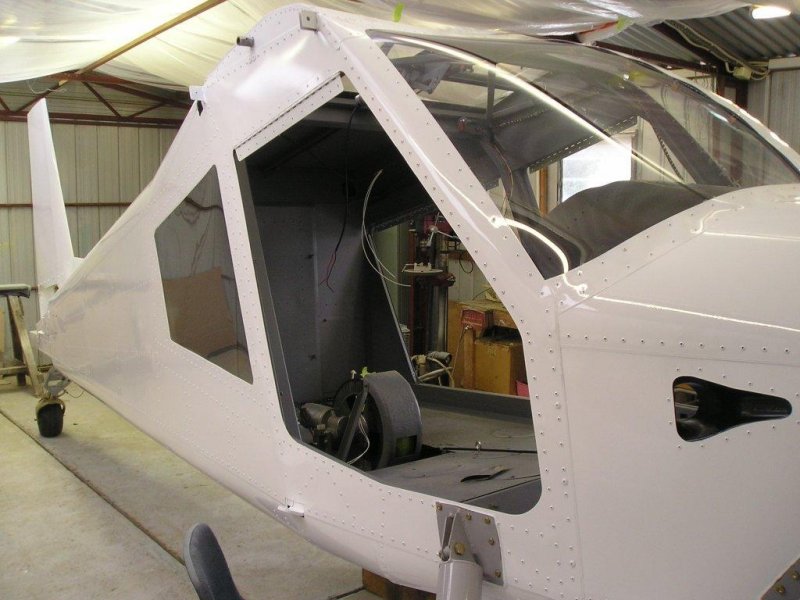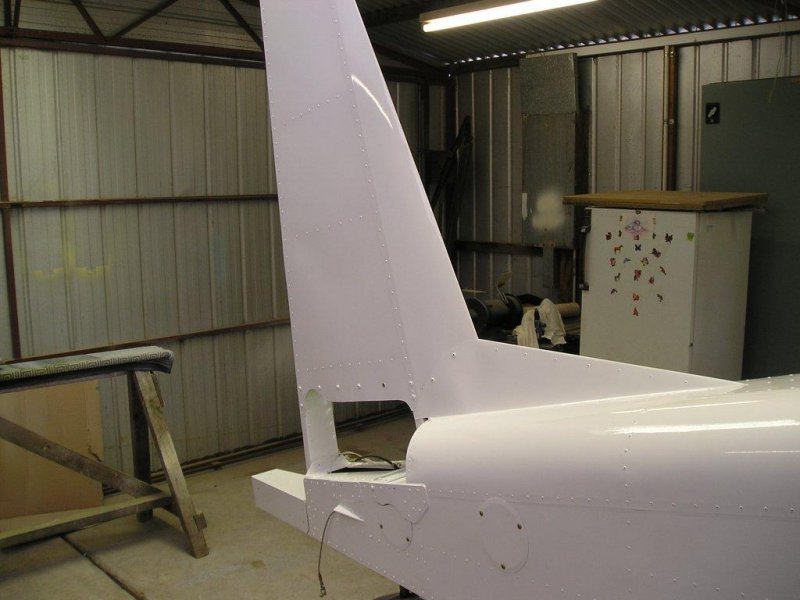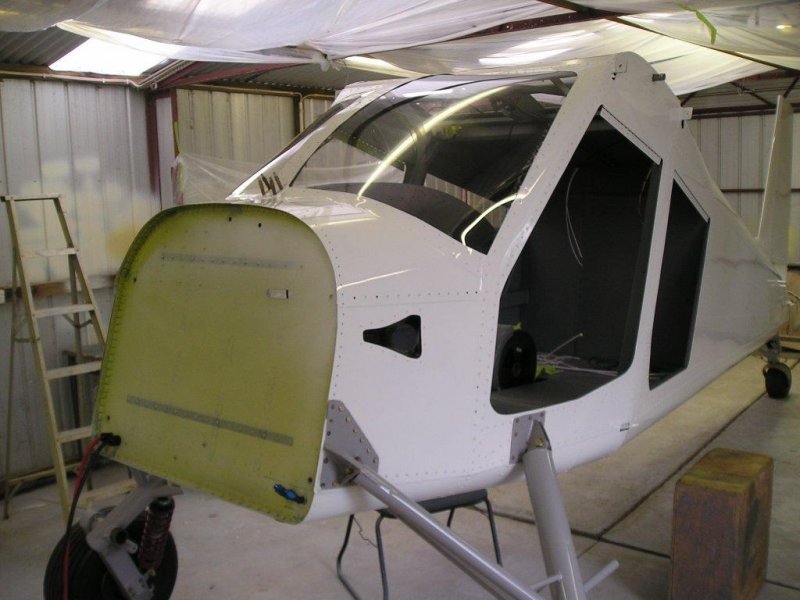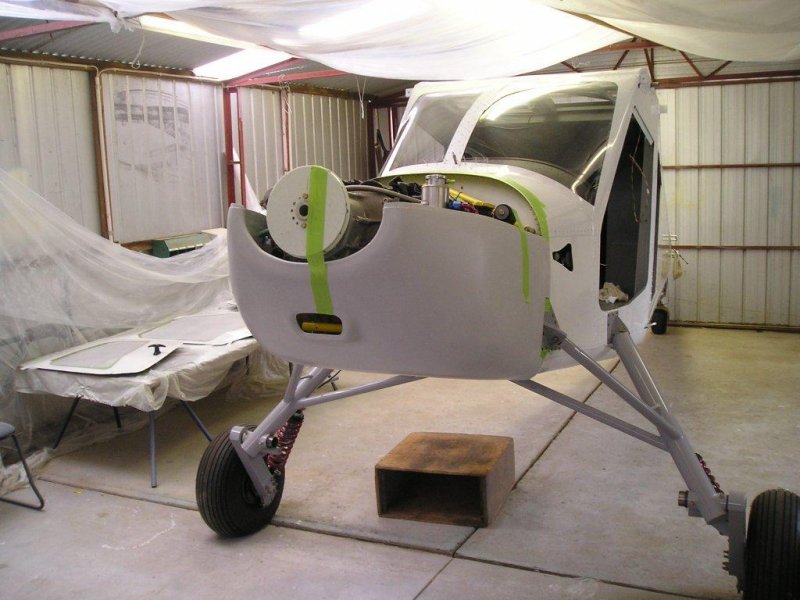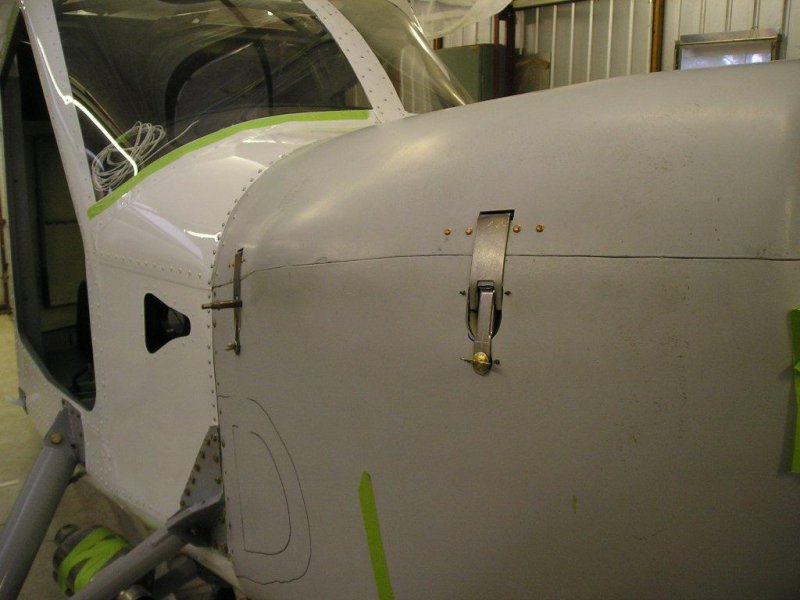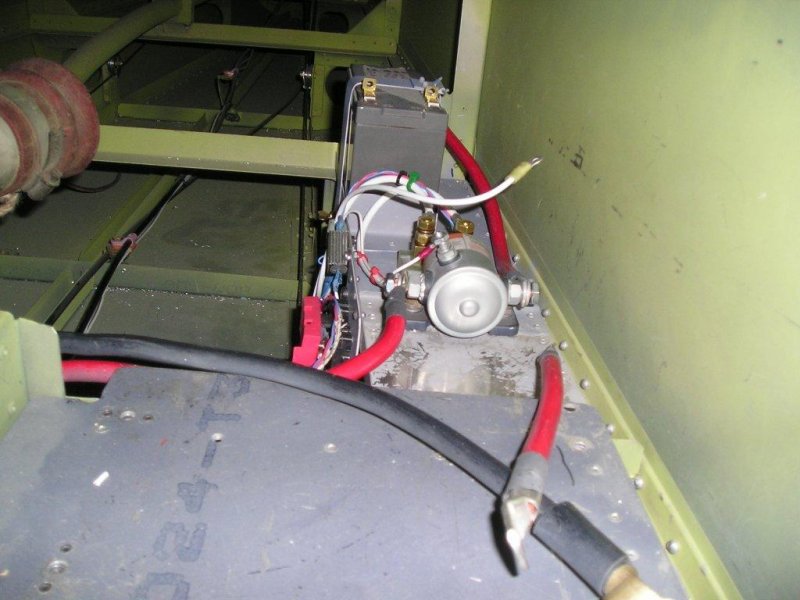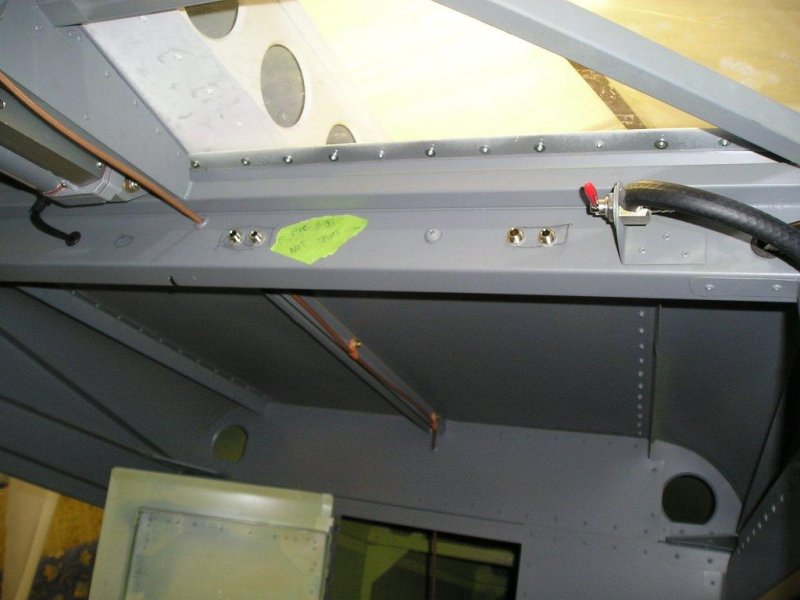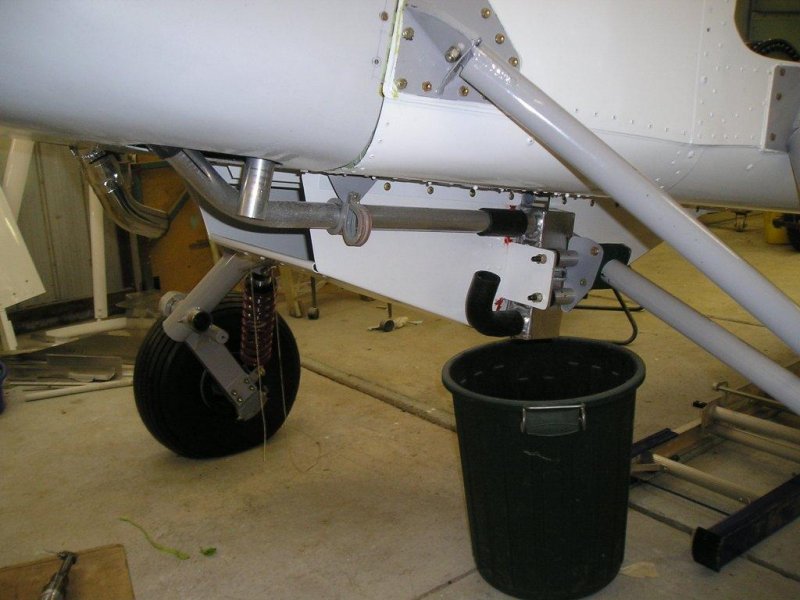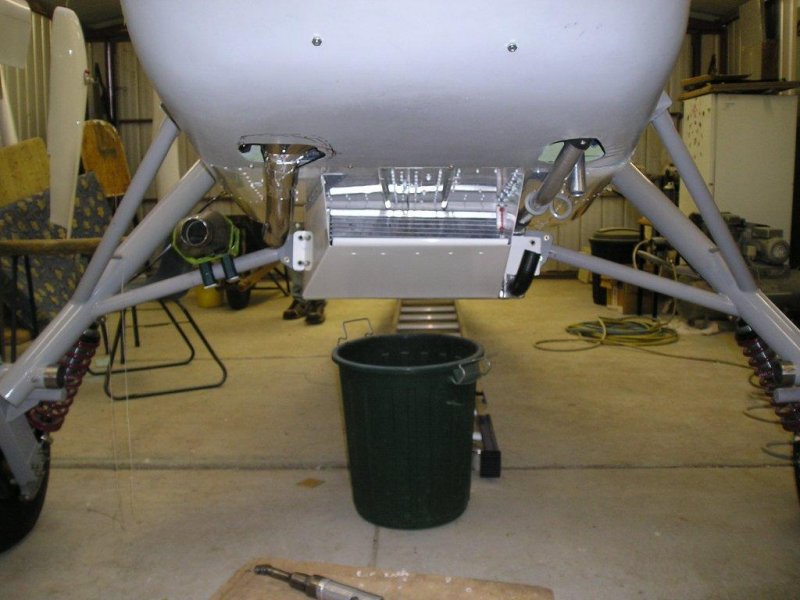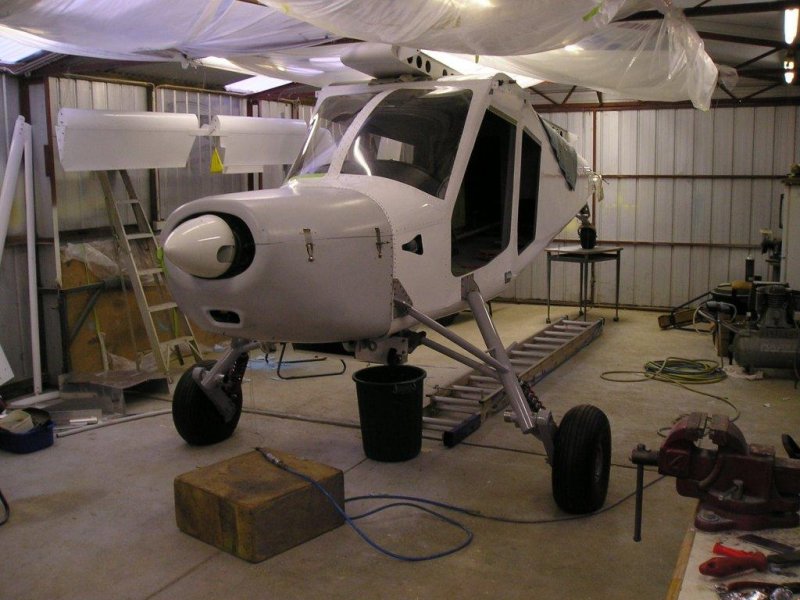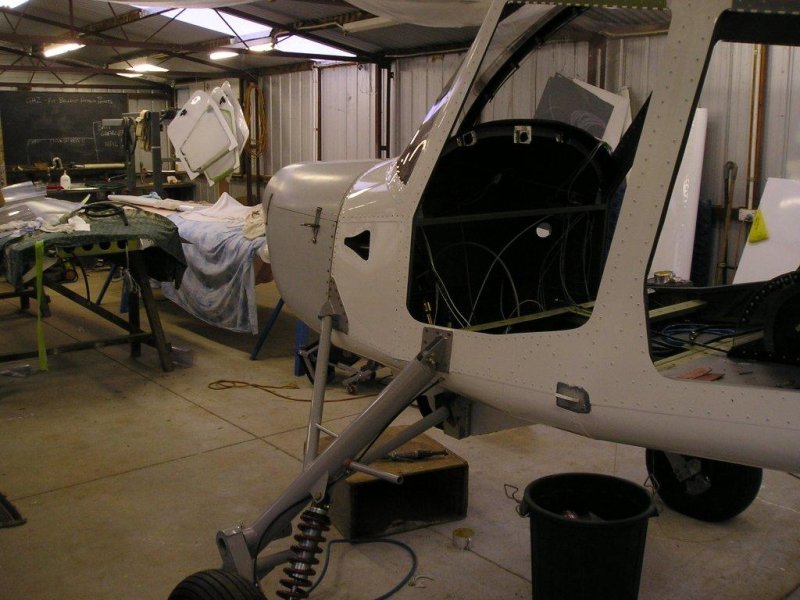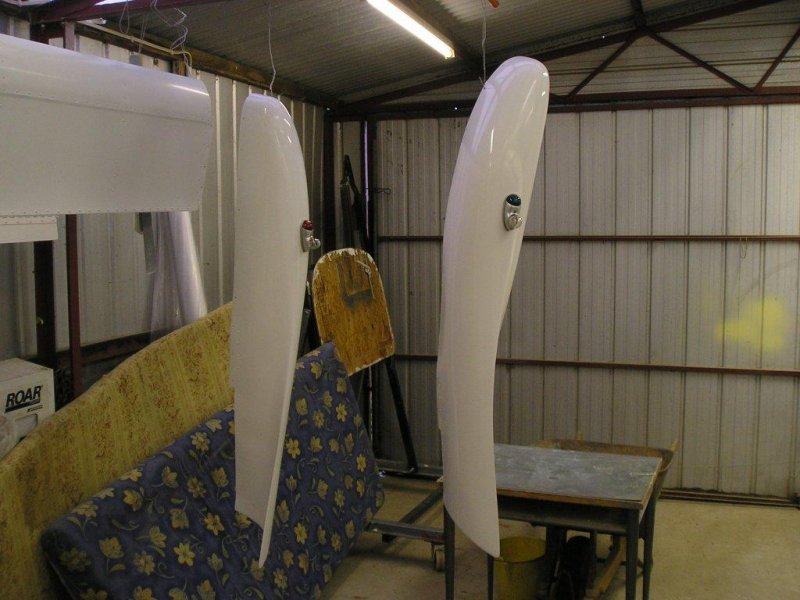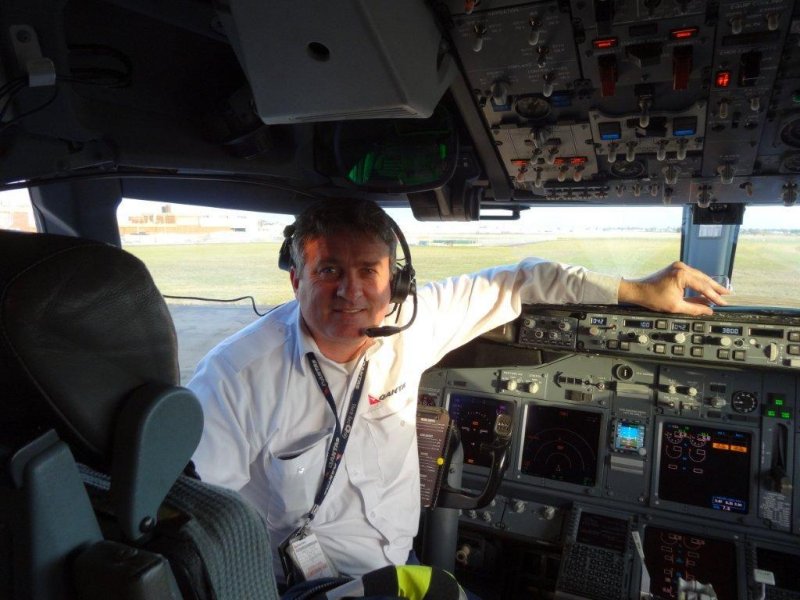2 August 2012
click on images for a bigger view.
With the fuselage now back at Bacchus Marsh airfield, we concentrated our efforts towards getting the fuselage painted.We had the fuselage positioned in the Museum annex however it became clear that the risk of overspray to the Museums other valuable assets in the annex was too great.
So we moved around the corner to the clubs workshop and prepared for painting. Fellow club member and good friend Alex Kreti painted the fuselage for us and did a great job.
We are very happy how it turned out. All the windows have now been fitted.
The engine cowl fitting has begun also. My idea was to use aircraft quality hinge section to attach the cowl to the airframe.
Peter then suggested that we could use the lower cowl hinge to give good access for maintenance. The Hornets flat bottom fuselage allowed this.
The composite cowl made by Phil is very strong and when attached to the fuselage with the hinge sections, it is solid and secure.
The top section of cowl required a little trimming but is coming along nicely.
As we want the top cowl to come off very easily for daily inspections, we decided to use some Piper cowl latches to secure the upper cowl.
This has not been done yet as we are still waiting for some parts to arrive. A stainless steel strip fitted to the engine firewall will help the upper cowl sit nicely in place.
Wiring is being installed. The rear compartment wiring is almost finished and along with the radio loom and headset connections completed.
The design of the wiring scheme is a hybrid of GA and automotive engine powered aircraft practices, adapted to suit our needs.
All wire and critical switching components are aircraft standard MIL spec with protection by fuse with isolating circuit breakers.
The engine management system has a redundant card which can be separately powered as a back-up system.
Our own design dual power buss system with separate battery and automatic changeover switching will operate one of the pair of Fuel pumps, injectors and ignition systems.
As our intended role is unique and very specific, the normal fuel system set up may need a little tweaking.
Normal practice for automotive engines in aircraft is have two pumps running for take-off then turn one off for cruise.
Mal and I have been thinking about this and believe that this would add to the tow pilot workload requiring attention which is best used for safety lookout and flight management functions.
Our plan is to carry out some testing on the engine fuel pressure regulator to gauge fuel pressure delivery to the engine with one or both pumps operating.
Ideally we will have a system that can look after itself without any input from the pilot. Something to think about at 3 to 4 in the morning when Im on nightshift.
Another safety feature in our Hornet was for a warning system for the pilot if landing with the tow rope extended.
We achieved this by installing a micro switch in the flap circuit. Gordon machined a clamp arrangement with a target on the flap torque tube in the fuselage.
This will be then wired up so that if landing with rope extended and flaps are extended a warning light and or buzzer will go off.
Both wingtips are now completed with addition of a small trailing edge support structure. The holes for mounting the lights have also been done.
Alex then painted the wingtip fairings. The mirror support structure has also been fabricated.
Mike has completed the radiator installation by fitting seals around the inlet cowl and radiator ensuring all the airflow passes thru the radiator core.
Peter has made good progress with working out the how to install the coolant supply and return lines.
At first we intended to use rubber hoses but they are quite heavy. Now we are looking into aluminium tubing with rolled beads on the ends and nice smooth formed bends.
Small sections of automotive rubber hoses will make up the joints. The mock up Peter made suggests that it can be done and he is still working on this.
Peter also is progressing the version 3 exhaust. After fitting the lower cowl we discovered we had more clearance than first thought.
Peter is attempting to make a system that can mostly fit inside the lower cowl. Again he had some mock up tubes made which suggest it can be done.
Finally it is nice to install components for the last time.
This means that we have begun going over all the bolts, nuts and screws used making sure they are all fitted to aircraft standard practices.
My apologies for not providing an earlier update as I have had a few people say to me that the blog has not been updated for a while.
- Man hours to date:
- 1055hrs
- Man hours to date:
- 1085hrs
16 August 2012
click on images for a bigger view.
The past month we have been working on the engine cowling and getting it to fit the way we intended.The upper cowl is fitted to the lower cowl by means of a tongue and groove.
When mated correctly it forms a very strong overlapping joint. It was important that the upper cowling be easily removed for daily inspections.
This was achieved by using Piper cowl latches.
To be honest there was a fair bit of mucking around to get it right but we were encouraged with each adjustment so we just kept going
Peter has made good progress on the rigid lines for the coolant system. This will be a lot lighter than using rubber hose.
It is not quite finished yet but we have a plan which looks like it will work out ok.
Peter is also working on the exhaust system and I hope to have some further details soon.
The electrical system is progressed with most of the connections made ready for the panel electrical installation.
All for now,
